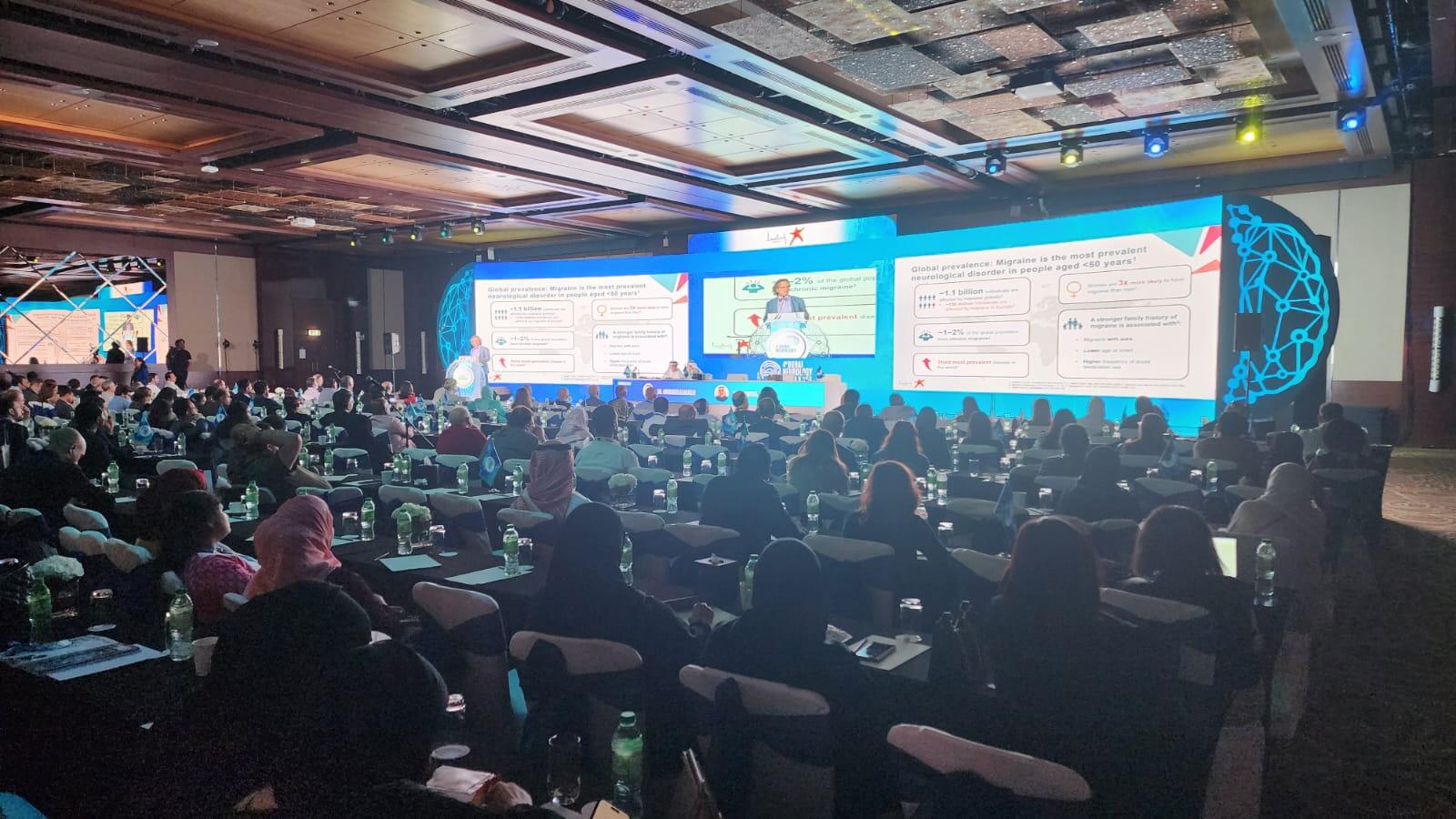Burden of Migraine: Identifying Unmet Needs
At the recent 4th Dubai Neurology Congress, UAE (23 February 2024), Professor Christopher Gottschalk, a distinguished neurology professor from Yale School of Medicine, USA, led an illuminating symposium titled " Burden of Migraine: Identifying Unmet Needs”. The symposium highlighted the multifaceted nature of migraine, emphasizing its impact across various aspects of patients' lives. Even with as few as 4–6 headache days per month, the burden on patients is considerable, which escalates with higher headache frequency. Its prevalence is significant and ranks as the third most prevalent disease globally. It stands as the second leading cause of years lived with disability worldwide, significantly impacting various aspects of life such as work, school, family, finances, and social interactions. Its chronic and often lifelong nature contributes to its substantial burden on public health, ranking among the leading causes of disability-adjusted life-years in young adult women. The symposium emphasized the importance of meeting the need for effective preventive treatment to help patients with migraine reclaim control of their lives and reduce the burden associated with the condition.
Beyond the Pain: Exploring the Complexities of Migraine Symptoms
Migraine transcends the realm of a mere headache; it emerges as a complex neurological ordeal with its distinctive phases and vexing symptoms1. The journey begins with the prodromal phase, where mood swings, food cravings, and sensory sensitivities herald the impending migraine storm. Next comes the aura phase, a rare experience characterized by visual distortions, numbness, and language challenges. Then, the headache phase strikes, delivering intense unilateral pain, accompanied by nausea, vomiting, and heightened sensory sensitivity, alongside feelings of anxiety and despair2. Even after the pain recedes, the prodromal remnants persist, leaving behind cognitive fog, exhaustion, and emotional turbulence. Moreover, mounting evidence suggests that increased migraine frequency sparks structural and functional alterations in the brain, underscoring the profound impact on neurological well-being3,4. Migraine could be either episodic migraine (EM) or Chronic migraine (CM) 3. EM where each migraine attack lasts from 4 to 72 hours, showing a unique mix of pain and strength. EM means having at least five of these attacks in your life, with some people having them rarely (low-frequency) and others more often (high-frequency). Chronic migraine (CM) is even more challenging, with headaches striking at least 15 days a month for over three months 2,3,5 . This nuanced classification system not only recognizes the fluctuating nature of headache frequency but also serves as a guiding light for therapeutic interventions aimed at enhancing patient outcomes.
Exposing the Silent Burden of Migraine
Migraine, the most widespread neurological condition among individuals under 50 years old, afflicts roughly 1.1 billion people globally, with about 130 million affected in Europe alone6,7. Chronic migraine, impacting 1-2% of the world's population, ranks as the third most common disease worldwide8. Women bear the brunt of this burden, experiencing migraine at triple the rate of men8. A family history of migraine often accompanies distinct clinical traits like migraine with aura, earlier onset, and heightened reliance on acute medications7. Migraine ranks second in causing years lived with disability globally, affecting individuals across all ages and genders. Its persistent and lifelong nature significantly disrupts various facets of life, including work, education, familial relationships, finances, and social engagements. Notably, migraine contributes substantially to years lived with disability in those aged 15-49, alongside prevalent conditions like back pain and age-related hearing loss9,10. Its impact extends further, as it ranks among the leading causes of disability-adjusted life-years in young women, highlighting its profound effect on public health.
Defending Against Migraine's Grip: Unveiling the Migraine Vicious Cycle
The migraine vicious cycle involves a complex interplay of symptoms, triggers, and physiological responses that escalate migraine attacks. It begins with specific brain regions activating and neurotransmitters releasing, leading to changes in blood flow, inflammation, and pain perception. Symptoms like headache pain, nausea, and sensory sensitivity exacerbate the cycle, which is further intensified by stress, hormonal changes, disrupted sleep, and dietary factors11,12. Various risk factors, including frequent use of acute migraine medications, mood disorders, and high stress levels, can push episodic migraine towards chronic forms or daily headaches12–14. These factors contribute to the transition from episodic to chronic migraine, highlighting the importance of early identification and management to prevent the worsening of the condition. Identifying and managing risk factors early in migraine therapy is vital for preventing the progression to chronic migraine and improving outcomes for patients14,15. Proactive measures can help prevent the transition from episodic migraine to chronic forms or medication-overuse headache (MOH) 16. These preventive strategies include adopting healthy lifestyle habits like regular sleep patterns, stress management, and consistent nutrition and hydration. Weight loss associated with addressing obesity has shown promise in reducing migraine severity and duration. Additionally, minimizing the use of acute migraine medications and following prescribed preventive treatments can prevent the development of chronic migraine or MOH. Educating patients about these protective measures and optimizing their treatment plan can significantly reduce the risk of severe migraine forms17,18.
Our correspondent’s highlights from the symposium are meant as a fair representation of the scientific content presented. The views and opinions expressed on this page do not necessarily reflect those of Lundbeck.




